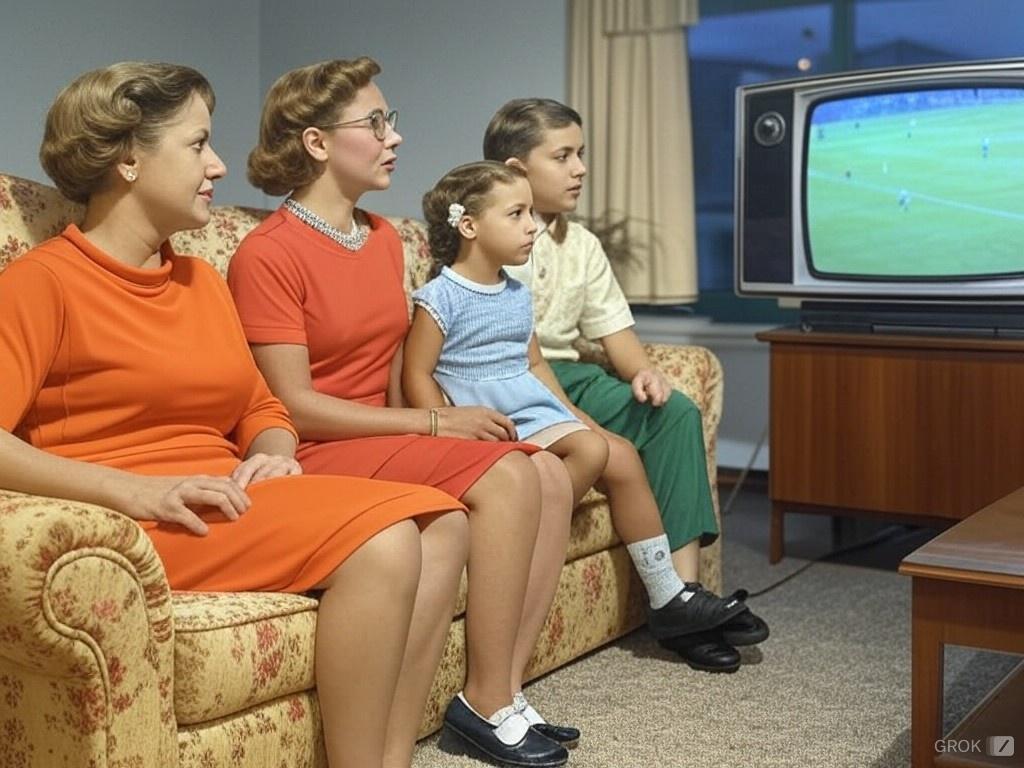A Century of Television

31 December 2024
In 1925, at Selfridge's in London, Scottish inventor John Logie Baird unveiled something the world had never seen before. His audience, small but intrigued, watched as ghost-like images flickered to life on a screen. 2025 is the 100th anniversary of the first public demonstration of television—a moment of genius birthed by the kind of tinkering that involved biscuit tins and bicycle lamps.
Baird probably couldn’t have predicted just how profoundly his contraption would reshape humanity’s evenings—and possibly our waistlines.
Fast-forward to today, and it’s hard to imagine life without television. The average home now boasts more screens than inhabitants, and whether it’s a kitchen counter mini-screen or a cinematic flat-panel display, TV has become a permanent, glowing fixture in our lives. Yet, despite its ubiquity, we rarely pause to marvel at just how transformative these past 100 years of television have been. It’s more than just a box—it’s a time machine, a comfort blanket, and, sometimes, a hotly contested battleground when the remote is missing.
Let’s start with the television’s humble beginnings. Baird’s original vision was, in some ways, modest. He sought to transmit moving pictures across space, a dream born of science fiction. From his first successful demonstration, it took years of fine-tuning, experimentation, and more than a little skepticism from contemporaries before television became commercially viable. By the late 1930s, televisions began to trickle into households, although they were more status symbols than staples. Their monochrome images were a luxury reserved for those who could afford the futuristic marvel.
The post-war years, though, saw television truly enter its stride. By the 1950s, television was the center of the living room. Families gathered in front of bulky sets to catch everything from the evening news to variety shows, their laughter and gasps united by a communal experience. Some might argue it was the golden era of television, with shared moments like the moon landing or Beatlemania broadcast into homes across the globe. These were moments that transcended geography, sparking collective awe and delight.
And then came color. In the 1960s, when screens burst into vibrant hues, television moved from being a window to the world to being a full-blown kaleidoscope. Suddenly, sports leapt from the screen, sitcoms became even more delightful, and wildlife documentaries showcased the brilliance of nature like never before. For many, it was as though television had finally come into its own, a glamorous new chapter in its relatively short life.
Television didn’t just entertain. It educated, informed, and—as critics often point out—sometimes misled. From Sesame Street teaching generations to count, to breaking news coverage of global events that brought the realities of war and disaster into our homes, TV became a reflection of our world, for better or worse. It gave rise to debates about its role in shaping societal values, sparking endless arguments over whether it was the ultimate cultural unifier or the cause of moral decay.
By the 1980s and 1990s, television had transformed into a kind of personal soap opera, one we watched unfold with hundreds of new channels and programs tailored to every niche. From 24-hour news cycles to the explosion of reality TV, the small screen became a bigger part of our lives. Innovations like remote controls and VCRs gave viewers power over their viewing habits, but little did we know that the real revolution was just around the corner.
Cue the 21st century and the rise of streaming. If Baird’s invention was a spark, then today’s streaming platforms are a bonfire. Television is no longer bound by schedules or even televisions themselves. It’s now on phones, tablets, and laptops, available on-demand in ways that defy the rigid programming grids of old. We’re living in an era of binge-watching, where entire seasons of shows drop in one fell swoop and weekends vanish into fictional universes. Streaming hasn’t just changed how we watch; it’s changed how stories are told, with cliffhangers designed to keep us glued to screens long past bedtime.
Yet, as television evolves, so too do our attitudes toward it. We’ve gone from reverence to addiction, and now, perhaps, to skepticism. Do we spend too much time watching? Are we overloading on screen time? These questions tug at our collective consciousness as we navigate an increasingly screen-saturated world. Despite these concerns, the power of television remains undeniable. It’s where we turn for comfort in times of crisis, where we seek distraction after a tough day, and where we connect with narratives that help us understand ourselves and others.
As television celebrates its centenary, it’s worth raising a metaphorical glass to its journey. From the clunky, flickering contraptions of Baird’s day to the sleek, ultra-HD displays of today, it’s been an extraordinary ride. And while the future of television might involve virtual reality, holograms, or innovations we can’t yet fathom, one thing’s certain: television, in whatever form it takes, will remain a reflection of who we are. It will continue to bring us together, make us laugh, cry, and think, just as it has for the past 100 years. Here's to the next century of television magic.
